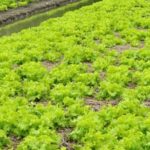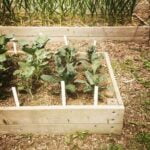Texas Panhandle vegetable gardening offers a unique set of challenges and opportunities for gardeners in the region. From climate and soil considerations to pest and disease management, navigating the specific conditions of the Texas Panhandle is crucial for successful vegetable cultivation. Whether you’re a seasoned gardener or just starting out, understanding the ins and outs of vegetable gardening in this area is essential for a bountiful harvest.
The Texas Panhandle’s semi-arid climate and alkaline soils present distinct challenges for vegetable growers. With hot summers, cold winters, and low annual precipitation, it’s important to choose the right vegetables and employ appropriate planting techniques to maximize success. This article aims to provide valuable insights into the best practices for Texas Panhandle vegetable gardening, including tips for selecting suitable vegetables and managing water scarcity.
In this comprehensive guide to Texas Panhandle vegetable gardening, we will explore the climate and soil considerations specific to the region, as well as offer expert advice on best vegetables to grow, tips for successful gardening, watering techniques, pest and disease management, seasonal planting guide, and community resources available for support.
Whether you’re a backyard gardener or an aspiring small-scale farmer, this article will equip you with the knowledge needed to thrive in Texas Panhandle’s unique growing conditions.
Climate and Soil Considerations for Vegetable Gardening in the Texas Panhandle
The Texas Panhandle region is known for its unique climate and soil conditions, which can pose both challenges and opportunities for vegetable gardening. The climate in the Texas Panhandle is characterized by hot summers, cold winters, and low precipitation, making it important for gardeners to select vegetables that are well-suited to these conditions. Additionally, the region’s soil is predominantly composed of clay and sandy loam, which can impact plant growth and productivity.
When considering vegetable gardening in the Texas Panhandle, it is essential to choose vegetables that are drought-tolerant and can withstand temperature fluctuations. Some of the best vegetables to grow in this region include tomatoes, peppers, squash, okra, and various types of beans. These vegetables are well-adapted to the hot and dry climate of the Texas Panhandle and can thrive in the region’s soil conditions.
In addition to selecting the right vegetables, gardeners in the Texas Panhandle should also focus on soil preparation and management. Amending the soil with organic matter such as compost or aged manure can improve its structure and fertility, helping plants establish strong root systems.
Additionally, using mulch in vegetable gardens can help conserve moisture, regulate soil temperature, and reduce weed growth. By taking these factors into consideration, gardeners can set themselves up for success when growing vegetables in the Texas Panhandle.
| Climate Considerations | Best Vegetables to Grow | Soil Management Techniques |
|---|---|---|
| Hot summers & cold winters | Tomatoes, peppers,&squash | Amending soil with organic matter |
| Low precipitation | Okra,&beans | Using mulch for moisture conservation |
Best Vegetables to Grow in the Texas Panhandle
When it comes to vegetable gardening in the Texas Panhandle, it’s important to choose vegetables that are well-suited to the region’s unique climate and soil conditions. While the hot, dry summers and cold winters can pose a challenge for gardeners, there are still plenty of vegetables that thrive in this area.
Root Vegetables
Root vegetables such as carrots, beets, and radishes are great choices for Texas Panhandle vegetable gardening. These hardy plants can tolerate the region’s sandy soils and are relatively resistant to drought. Consider planting varieties that mature quickly, as the short growing season in the Texas Panhandle means less time for vegetables to reach maturity.
Leafy Greens
Leafy greens like spinach, lettuce, and kale also do well in the Texas Panhandle. These vegetables can be grown in both spring and fall, making them a versatile choice for gardeners. With proper care and irrigation, leafy greens can thrive even in the region’s hot summer months.
Tomatoes
Despite the challenging climate, tomatoes can be successfully grown in the Texas Panhandle with some extra care. Choose smaller varieties such as cherry or grape tomatoes that have a shorter time to maturity. Planting them in raised beds with plenty of organic matter can help improve soil drainage and moisture retention.
By selecting the right vegetables and providing proper care, gardeners in the Texas Panhandle can enjoy a bountiful harvest despite the challenges of the region’s climate and soil. With some research and experimentation, it is possible to create a productive and sustainable vegetable garden in this area.
Tips for Successful Vegetable Gardening in the Texas Panhandle
The Texas Panhandle can pose some unique challenges for vegetable gardening, but with the right tips and techniques, it is definitely possible to have a successful garden in this region. One of the most important things to keep in mind when vegetable gardening in the Texas Panhandle is to choose varieties of vegetables that are well-suited to the hot, dry climate of the area.
Some good choices for vegetables that thrive in this region include okra, peppers, tomatoes, and squash.
In addition to selecting the right vegetables, it’s also crucial to pay close attention to soil preparation and maintenance. The soil in the Texas Panhandle is often alkaline and lacking in organic matter, so adding compost and other organic materials to the soil can greatly improve its quality. It is also important to ensure that the soil has proper drainage, as excessively wet soil can lead to root rot in many vegetable plants.
Another important tip for successful vegetable gardening in the Texas Panhandle is to provide adequate protection from the strong winds that are common in this region. This can be achieved by planting windbreaks or using structures such as trellises or fences to shield delicate plants from excessive wind exposure.
| Tips for Successful Vegetable Gardening | In the Texas Panhandle |
|---|---|
| Choose vegetable varieties suited for hot, dry climate | Add compost and organic materials to improve soil |
| Ensure proper drainage for soil | Provide protection from strong winds with windbreaks or structures |
Watering and Irrigation Techniques for Vegetable Gardens in the Texas Panhandle
When it comes to vegetable gardening in the Texas Panhandle, one of the most important factors to consider is watering and irrigation. The arid climate of this region means that proper watering techniques are essential for successful vegetable growth. Here are some tips and techniques for ensuring that your vegetable garden gets the water it needs to thrive in this challenging environment:
- Choose the right irrigation method: Drip irrigation is often recommended for vegetable gardens in the Texas Panhandle, as it delivers water directly to the base of the plants, minimizing water waste through evaporation.
- Establish a watering schedule: Since the Texas Panhandle typically experiences hot, dry weather, it’s important to establish a regular watering schedule for your vegetable garden. Water deeply and infrequently to encourage deep root growth.
- Use mulch to retain soil moisture: Applying a layer of organic mulch, such as straw or wood chips, around your vegetable plants can help retain soil moisture and reduce evaporation, especially during periods of intense heat.
In addition to these general watering and irrigation tips, it’s also important to be mindful of local water conservation guidelines and restrictions when planning and maintaining a vegetable garden in the Texas Panhandle. Being mindful of water usage not only helps conserve this precious resource but can also contribute to the overall health and sustainability of your garden.
While successful vegetable gardening in the Texas Panhandle does present its challenges, with careful attention to watering and irrigation techniques, you can nurture a bountiful garden filled with delicious produce. By implementing these strategies and staying attuned to the specific needs of your plants and local environmental conditions, you can enjoy a thriving vegetable garden despite the region’s unique climate.
Pest and Disease Management for Texas Panhandle Vegetable Gardens
When it comes to Texas Panhandle vegetable gardening, pest and disease management is crucial for a successful harvest. The unique climate and soil conditions in this region can make vegetable gardens susceptible to a variety of pests and diseases. It’s important for gardeners to be proactive in preventing and managing these issues to ensure the health and productivity of their crops.
To effectively manage pests and diseases in your Texas Panhandle vegetable garden, consider the following tips:
- Regularly inspect your plants for signs of pest infestation or disease.
- Use companion planting techniques to naturally repel pests or attract beneficial insects.
- Implement crop rotation practices to help prevent the buildup of soil-borne diseases.
- Consider using organic methods such as neem oil or insecticidal soap to control common pests like aphids or spider mites.
In addition to proactive prevention methods, it’s also important for Texas Panhandle vegetable gardeners to be familiar with common pests and diseases that affect their crops. Some prevalent issues in this region include flea beetles, cabbage worms, blossom end rot, and powdery mildew. By staying informed about these potential threats, gardeners can quickly address any problems that arise.
Participating in local gardening communities and seeking advice from experienced growers can also provide valuable insight into effective pest and disease management strategies specific to the Texas Panhandle region. Whether it’s joining a community garden group or attending workshops hosted by agricultural extension offices, tapping into these resources can help vegetable gardeners stay one step ahead when it comes to protecting their crops from pests and diseases.
Seasonal Planting Guide for Texas Panhandle Vegetable Gardening
Planting vegetables in the Texas Panhandle can be challenging due to the region’s unique climate and soil conditions. To maximize success, it is important for gardeners to understand the seasonal planting guide for the Texas Panhandle. By following a well-planned planting schedule, vegetable gardeners can ensure a bountiful harvest throughout the year.
Spring Planting
In the Texas Panhandle, spring is an ideal time to plant cool-season vegetables such as lettuce, spinach, carrots, and radishes. These crops thrive in the region’s mild temperatures and can withstand light frosts. It is important to start planting these vegetables early in the season to allow them enough time to mature before the heat of summer arrives.
Summer Planting
As temperatures rise in the Texas Panhandle, it becomes important to focus on warm-season vegetables that can tolerate the hot and dry conditions of summer. Crops such as tomatoes, peppers, cucumbers, and squash are well-suited for this time of year. It is crucial to provide ample irrigation to these plants during the sweltering summer months.
Fall Planting
Fall presents another opportunity for vegetable gardening in the Texas Panhandle. As temperatures begin to cool, gardeners can plant a variety of cool-season crops including broccoli, cauliflower, Brussels sprouts, and kale. These vegetables perform well in the region’s milder fall weather and can often be harvested well into winter.
By following a carefully planned seasonal planting guide, vegetable gardeners in the Texas Panhandle can make the most of their growing season while ensuring a diverse and plentiful harvest. It is essential to pay attention to each crop’s specific needs and adjust planting times accordingly based on local climate patterns.
Community Resources and Support for Vegetable Gardeners in the Texas Panhandle
In conclusion, vegetable gardening in the Texas Panhandle can be a rewarding and fruitful endeavor with the right knowledge and resources. The region’s unique climate and soil conditions present both challenges and opportunities for gardeners, but with careful planning and proper techniques, a successful harvest is well within reach. By utilizing community resources and seeking support from local gardening organizations, aspiring vegetable gardeners can greatly enhance their chances of creating a thriving garden in the Texas Panhandle.
One valuable resource for Texas Panhandle vegetable gardeners is the local cooperative extension office, which provides expert advice, soil testing services, and educational programs tailored to the specific needs of the region. Additionally, joining a community gardening group or club can offer opportunities for networking, sharing knowledge, and gaining access to communal resources such as tools and equipment. These connections can also provide moral support and camaraderie among fellow gardeners facing similar challenges in the Texas Panhandle.
Furthermore, taking advantage of seasonal planting guides specific to the Texas Panhandle can help gardeners make informed decisions about what to plant when, maximizing their chances of success. By incorporating these community resources and seeking out local support networks, vegetable gardeners in the Texas Panhandle can tap into a wealth of knowledge and assistance that will contribute to their gardening success.
Whether you are new to gardening or an experienced enthusiast, making use of these resources can make all the difference in your journey towards bountiful harvests in the unique environment of the Texas Panhandle.
Frequently Asked Questions
What Vegetables Grow Best in North Texas?
In North Texas, vegetables like tomatoes, peppers, squash, cucumbers, and okra tend to grow best due to the region’s hot and dry climate. These vegetables thrive in the warm weather and are well-suited for North Texas soil.
When Should I Start a Vegetable Garden in Texas?
In Texas, it is best to start a vegetable garden in late winter or early spring. This timing allows the vegetables to establish their roots before the intense heat of summer arrives. It also provides a longer growing season for most crops.
What Vegetables Tolerate Texas Heat?
Certain vegetables are better able to tolerate the extreme heat of Texas. These include okra, black-eyed peas, sweet potatoes, and peppers. These vegetables have adapted to the hot climate and can continue producing despite the high temperatures in Texas.

If you’re looking to get into vegetable gardening, or are just looking for some tips on how to make your current garden better, then you’ve come to the right place! My name is Ethel and I have been gardening for years. In this blog, I’m going to share with you some of my best tips on how to create a successful vegetable garden.





